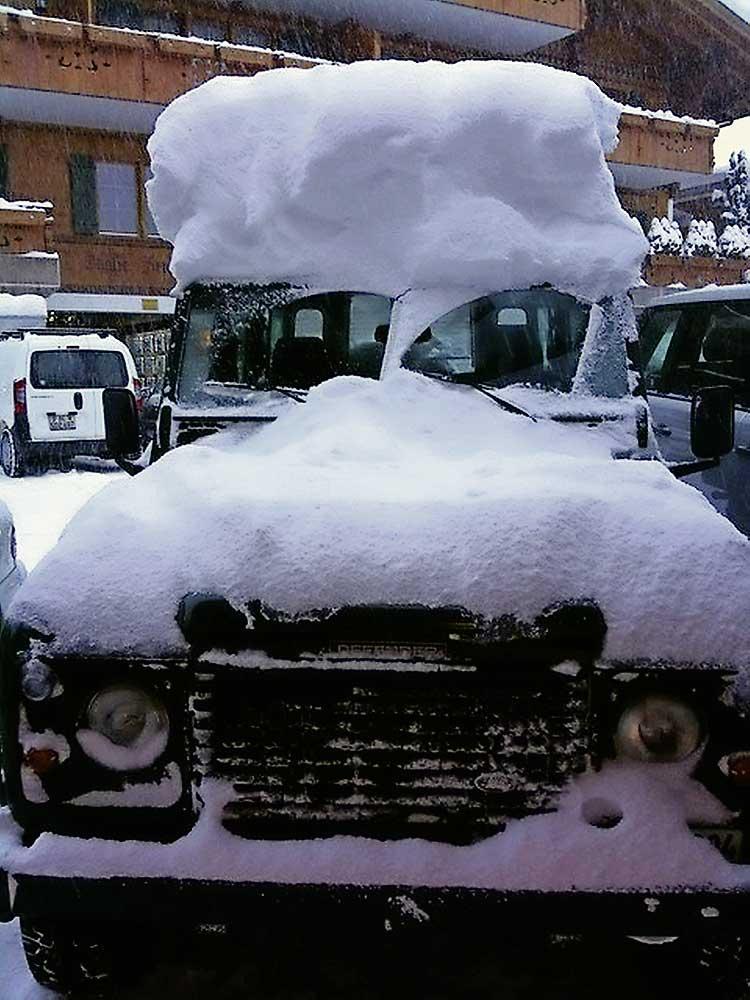Expat adventures
15.02.2018 LifestyleThere are a number of significant dates in the calendar: Christmas, Easter, the first day of spring, the summer solstice… you get the picture. For many, Halloween is a day for dressing up, trick or treating and watching horror films with friends.
In our household it’s also the date by when winter tyres must be on the car.
Eight wheels good, four wheels bad
We weren’t always so organised. To the uninitiated, the Swiss have a bit of a ‘thing’ for tyres. Before I moved here the only time I bought tyres was when I bought a car. But here we were advised to get eight wheels: four for summer, four for winter. It seemed quite a faff, but at least we were set for the weather.
But winter tyres must be on the car to make a difference. That first year the snows arrived in early November. It was time to get the tyres changed. I’d call the garage as soon as we got home.
Fight-or-flight
But it was already too late.
I remember the moment in technicolour. My husband turned into our road: a steep, narrow lane. We had just passed the first chalet on the left when the car stopped moving forward. My husband pressed gently on the accelerator, but to no effect. The wheels made that stomach-churning whirring sound and the dread realisation dawned: we had absolutely no grip.
Worse, instead of continuing our careful journey up the hill, we began to slide backwards. You’ve probably heard about the ‘fight-or-flight’ response at times of stress. As my husband wrestled with the controls, my hand clamped tightly around the door handle and for a fleeting second I considered leaping out.
Happily there was no need for such drastic measures. We were saved by the heated strip of road at the bottom of the hill. As we slid onto clean tarmac, my husband punched the brakes and we came to a controlled stop.
But now we faced a new problem: our winter wheels were stacked in our garage up the hill. We solved the problem by rolling the tyres onto a large metal snow shovel. It acted as a kind of sledge and, one by one, we dragged the wheels down the hill to the car.
As we trudged up and down the hill I could feel the tut-tutting and head shaking from behind our neighbours’ net curtains.
Polar diesel
On winter journeys we play a ‘guess the temperature’ game. Whoever identifies the lowest temperature on the car’s display is the winner. This invariably occurs on a stretch of road between Rougemont and Saanen where it’s usually several degrees colder than the rest of the route.
The last couple of winters have been mild, but a few years ago we had an achingly freezing January with temperatures of -25°C. One night that year I set off to meet friends in Gstaad. I came to the notoriously cold section of road by the airport and without warning the car just stopped.
A couple of days later I heard from our mechanic: the weather was so cold the diesel had frozen in our car. That was the moment I learned about polar diesel. This is the stuff to use in the winter, apparently, though not every garage in the region stocks it. He told me cars had been dropping like flies across Switzerland with the same problem.
But we’re like locals now and haven’t been caught out since. From that day to this, winter tyres are on our car by Halloween even in the balmiest of autumns. And while we’d only use polar diesel, since moving to the village we’ve found the best solution is not to drive at all.
Anna Charles




